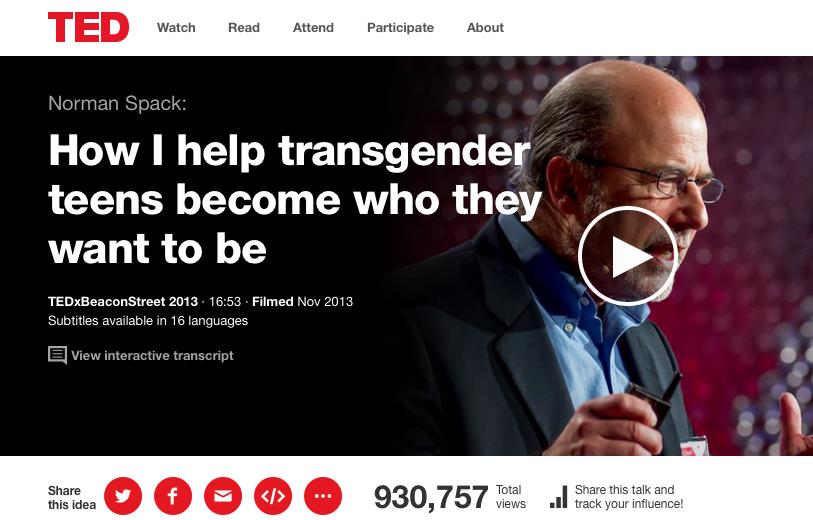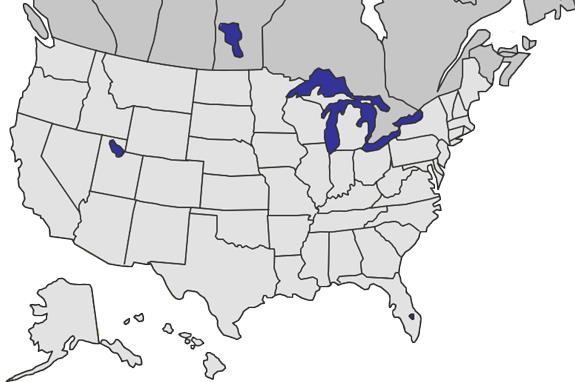Umhs-adolescenthealth.org
Medical Treatment of the
Transgender Adolescent: A Field
Daniel Shumer, MD MPH Assistant Professor in Pediatrics
Sara Wiener, LMSW Division of Pediatric Endocrinology University of Michigan
We have no financial relationships to disclose
All medications used in transgender medicine are "off-label"
• Introduction • Two vignettes • Define gender dysphoria • Discuss mental health disparities • Review approaches to children and
adolescents with gender dysphoria
• Outline pharmacologic therapies used in
transgender medicine
• Outline challenges and barriers to care, and
future directions for the field.








• Timmy is presents to the pediatrician at age 8 years…
– Since age 4 he has very much wished he were a girl, often
stating emphatically, "I'm not a boy, I'm a girl!"
– He has been secretly playing dress-up in his older sister's
– He loves to play with dolls and pretends that he is a
mother feeding and changing their diapers
– At school he likes to play with girls, and avoids rough-and-
tumble activities with boys
– Throws tantrums when redirected away from feminine
– Recently stated that "I just want to chop it off!" in
reference to his penis
– Parents are distressed and don't know how to proceed
• Sarah "Scott" is a 14 year-old natal girl who
presents year-old girl presents to endocrine clinic with his parents, referred by pediatrician
– Described by parents as a "tomboy" when younger – Over time, has more clearly expressed a male identity – Social transition at age 12 – More socially withdrawn and depressed with new
cutting behavior
– Extremely distraught about new breast development – Very concerned about the prospect of menstruating
• Biologic sex – the genetic, anatomic, and hormonal
determinants that define male and female
• Gender identity – a person's own classification of self
as male or female
• Gender expression – how you demonstrate your
gender through the way you dress, act, behave and interact
• Sexual orientation – the sex of the persons that one
finds sexually desirable
• Gender identity disorder (DSM IV) • Gender dysphoria (DSM V)
Gender Dysphoria in Adolescents and Adults
A. Marked incongruence between one's experienced/expressed
gender and assigned gender, of at least 6 months' duration, as manifest by at least two of the following
Marked incongruence between expressed gender and primary/secondary sex characteristics
Strong desire to be rid of primary/secondary sex characteristics or desire to prevent development of anticipated secondary characteristics
Strong desire for the primary/secondary sex characteristics of the other gender
Strong desire to be the other gender (or some alternative gender)
Strong desire to be treated as the other gender (or alternative gender)
Conviction that one has typical feelings of the other gender
B. Clinically significant distress or impairment in social,
occupational, or other areas of functioning
Psychiatric Comorbidity First 158 patients seen at Boston Children's Hospital
With psychiatric diagnosis before CHB
evaluation* On psychiatric medications
With prior psychiatric hospitalizations
History of self-mutilation
History of suicide attempt
* 25 patients presented with more than one psychiatric diagnosis.
Natural History of GD
Approach to Children with GD
• Developmental Biopsychosocial Model
– Focus on reduction in gender dysphoria and
acceptance of biologic sex
• Gender Affirmative Model (Hill)
– Focus on helping parents support their child's
Sex Differences in Testosterone
Medical Interventions
Trans youth suffer from two conditions
commonly treated by pediatric
endocrinologists…
• Precocious puberty: precocity of an
undesired puberty
• Pubertal delay: delay of the
desired puberty
The Amsterdam Experience
Treatment of adolescents with GD diagnosed by a mental
health professional at Tanner 2-3 (males 11-13; females
10-12) using GnRHa analogues to:
1) Suppress spontaneous pubertal
development
2) Allow for balanced decision regarding sex
reassignment
Followed by initiation of cross-sex hormone therapy at
Followed by gender reassignment surgery at age 18
Sara Wiener, LMSW
Pediatric Gender Assessments
• Detailed interviews with patient alone,
caregivers alone, and family system together, primarily narrative based but also including some gender measures
• Goal of assessment is to gain a
comprehensive, clear understanding of the young person's gender history, current gender identity, current functioning, needs, and wishes for the future
Sara Wiener, LMSW
Pediatric Gender Assessments
– Whether the patient meets DSM 5 criteria for Gender Dysphoria – Whether the patient's cross gender identification has been consistent,
insistent, and persistent over time
– Whether the patient has comorbid mental health diagnoses, and if so,
are they reasonably well controlled
• Exploring the role of trauma, cognitive functioning, deception,
• Differential diagnosis: GD versus sexual orientation, trauma,
and eating disorder, body dysmorphic disorder, fetishism, or psychosis
Medications to suppress pubertal development or pubertal symptoms "Blockers"
• GnRH analogs • Progestins • Spironolactone
– Suppression of development of secondary sex
• Improves future ability to pass as the affirmed gender • Minimizes dysphoria associated with unwanted
pubertal changes
• "Reversible"
– Concern about social difficulty remaining pre-
– Concern about bone density accrual
• Leuprolide (Lupron Depo-Ped)
– 15mg IM monthly ($2,314/kit, $27,768/year) – 30mg IM every 3 months ($6,942/kit, $27,768/year)
– Supprelin LA (50mg) 65mcg/day
• Approved for precocious puberty in children, manufacturer
recommends annual replacement
– Vantas (50mg) 50mcg/day
• Approved for prostate cancer treatment in adult men,
manufacturer recommends annual replacement
Other "Blockers"
– Norethindrone, Depo-Provera
• Suppresses menses in natal females • Blunts development of male sex characteristics in natal
• Spironolactone
• Blocks action of androgens at their receptor • Used primarily to decrease development of facial and
body hair in transwomen
Cross sex hormones
• Testosterone (F to M)
– Testosterone enanthate or cypionoate
• 50mg SC weekly • Follow labs, potential increase to 80mg SC weekly
• Estrogen (M to F)
– 17β-estradiol (estrace)
• 0.5mg oral daily for 6-12 months • 1mg oral daily for another 6 months • 2mg oral daily • Higher doses required if not on GnRH agonist
• 55 transgender adults (22 transwomen, 33
– Assessed at three timepoints
• Before puberty suppression (mean age 13.6) • At indroduction of cross-sex hormones (mean age 16.7) • At least 1 year after gender reassignment surgery (mean age 20.7)
– After gender reassignment, GD was alleviated,
psychological functioning had improved
– Well-being was similar to or better than same-age young
adults from the general population
De Vries et al. Adult psychological outcome after puberty suppression and
gender reassignement. Pediatrics 2014.
Political and Logistic Challenges
• Perception that GD is a psychiatric (DSM-IV), not
medical, condition
• Lack of mental health personnel skilled in
assessing gender dysphoric children
• Unfamiliarity and anxiety in the pediatric
endocrine community concerning medical
treatment of GD in children and adolescents
• Prohibitively expensive costs and lack of
insurance coverage
Referecnes and Thank You!
American Psychiatric Association. (2013). Diagnostic and Statistical Manual of Mental Disorders (5th ed.). Arlington, VA.
Delemarre-Van de Waal HA, Cohen-Kettenis PT. (2006). Clinical management of gender identity disorder in adolescents: a protocol on psycological and paediatric endocrinology aspects. Eur J Endo 155(Suppl 1):S131-S137.
De Vries et al. (2014). Young adult psychological outcome after puberty suppression and gender reassignment. Pediatrics 134(4), 1-9
Edwards-Leeper L, Spack NP. (2012). Psychological evaluation and medical treatment of transgender youth in an interdisciplanary "Gender Management Service" (GeMS) in a major pediatric center. J of Homosexuality 59(3), 321-36.
Hembree WC, Cohen-Kittenis P, Delemarr-van de Waal HA, Gooren LJ, Meyer WJ, Spack NP, Montori VM. (2009). Endocrine treatment of transsexual persons: an Endocrine Society clinical practice guideline. J of Clin Endo and Metab 94(9), 31232-54.
Hill DB, Menevielle E, Sica KM, Johnson A. (2010). An affirmative intervention for families with gender variant children: parental ratings of child mental health and gender. J of Sex and Marital Ther 36(1), 6-23.
Shumer DE, Spack NP. (2013). Current management of gender identity disorder in childhood and adolescence: guidelines, barriers and areas of controversy. Curr Opin in Endo, Diab, Obesity 20(1), 69-73.
Spack NP, Edwards-Leeper L, Feldman HA, Leibowitz S, Mandel F, Diamond DA, Vance SR. (2012). Children and adolescents with gender dysphoria referred to a pediatric medical center. Pediatrics 129(3), 418-25.
Zucker KJ, Wood H. (2011). Assessment of gender variance in children. Child and Adol Psych Clinics of North Am 20(4), 665-80.
Source: http://umhs-adolescenthealth.org/wp-content/uploads/2014/07/Dan-Shumer-and-Sara-Wiener-Medical-Treatment.pdf
BRITTON-HECLA JR. HIGH & HIGH SCHOOL HOME OF THE BRAVES Britton, SD 57430 Telephone: (605) 448-2234 ext. 1 www.britton.k12.sd.us Steve Benson-Superintendent Carrie James-Principal Sheila Anderson- Counselor Brian Freeman- Activities Director MISSION STATEMENT The mission of the Britton-Hecla School District is to promote a positive, challenging and safe environment for every student. Our goal is to provide all students with the life skills necessary for continuous growth as productive global citizens through a cooperative effort of school, family, business and community. WELCOME We welcome you as a member of the Britton-Hecla student body. As a citizen of this school, you are expected to follow the rules that are established for all students. Your success in this school will be directly proportional to your efforts. Please call on your teachers for the help that you need to be successful. FACULTY TEACHING ASSIGNMENTS Sheila Anderson
TRENDS in Pharmacological Sciences The Akt–GSK-3 signaling cascade inthe actions of dopamine Jean-Martin Beaulieu, Raul R. Gainetdinov and Marc G. Caron Department of Cell Biology, Duke University Medical Center, Durham, NC 27710, USA Drugs that act on dopamine neurotransmission are in a diminution of PKA activity D2-class important tools for the management of multiple neurop-









